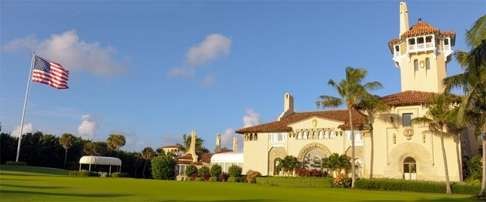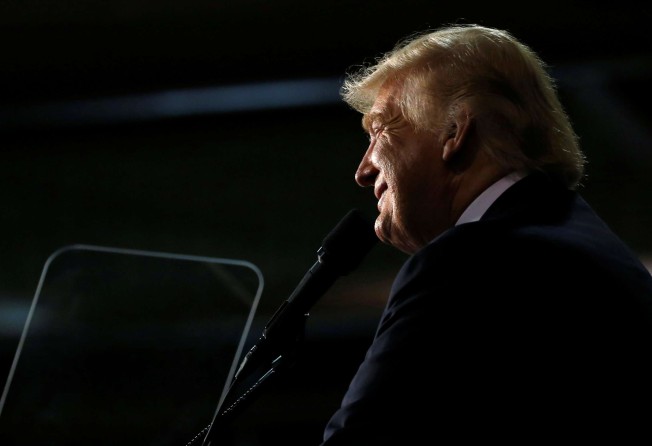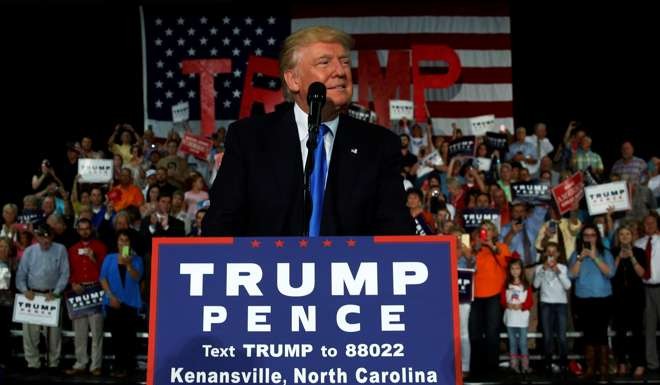
Donald Trump used charity’s money to settle his businesses’ legal disputes

Donald Trump spent more than a quarter-million dollars from his charitable foundation to settle lawsuits that involved the billionaire’s for-profit businesses, according to interviews and a review of legal documents.
Those cases, which together used US$258,000 from Trump’s charity, were among four newly documented expenditures in which Trump may have violated laws against “self-dealing” - which prohibit nonprofit leaders from using charity money to benefit themselves or their businesses.
In one case, from 2007, Trump’s Mar-a-Lago Club faced US$120,000 in unpaid fines from the town of Palm Beach, Florida, resulting from a dispute over the height of a flagpole.

In another case, court papers say one of Trump’s golf courses in New York agreed to settle a lawsuit by making a donation to the plaintiff’s chosen charity. A US$158,000 donation was made by the Trump Foundation, according to tax records.
The other expenditures involved smaller amounts. In 2013, Trump used US$5,000 from the foundation to buy advertisements touting his chain of hotels in programmes for three events organised by a District of Columbia preservation group. And in 2014, Trump spent US$10,000 of the foundation’s money for a portrait of himself bought at a charity fundraiser.
Or, rather, another portrait of himself.
Several years earlier, Trump had used US$20,000 from the Trump Foundation to buy a different, 1.8-metre-tall portrait.
I represent 700 nonprofits a year, and I’ve never encountered anything so brazen

More broadly, these cases also provide new evidence that Trump ran his charity in a way that may have violated US tax law and gone against the moral conventions of philanthropy.
“I represent 700 nonprofits a year, and I’ve never encountered anything so brazen,” said Jeffrey Tenenbaum, who advises charities at the Venable law firm in Washington. After The Washington Post described the details of these Trump Foundation gifts, Tenenbaum described them as “really shocking.”
“If he’s using other people’s money - run through his foundation - to satisfy his personal obligations, then that’s about as blatant an example of self-dealing [as] I’ve seen in a while,” Tenenbaum said.
The Trump campaign was sent a detailed list of questions about the four cases but received no response.
The New York attorney general’s office declined to comment when asked whether its inquiry would cover these new cases of possible self-dealing.
Trump founded his charity in 1987 and for years was its only donor. But in 2006, Trump gave away almost all the money he had donated to the foundation, leaving it with just US$4,238 at year’s end, according to tax records.
You can’t have a charitable foundation paying off Trump’s personal obligations. That would be classic self-dealing
Then, he transformed the Trump Foundation into something rarely seen in the world of philanthropy: a name-branded foundation whose namesake provides none of its money. Trump gave relatively small donations in 2007 and 2008, and afterward: nothing. The foundation’s tax records show no donations from Trump since 2009.
Its money has come from other donors, most notably pro-wrestling executives Vince and Linda McMahon, who gave a total of US$5 million from 2007 to 2009, tax records show. Trump remains the foundation’s president, and he told the IRS in his latest public filings that he works half an hour per week on the charity.
There have been cases in which Trump used the charity’s money in a way that appeared to violate the law.
In 2013, for instance, the foundation gave US$25,000 to a political group supporting Florida Attorney General Pam Bondi. That gift was made about the same time that Bondi’s office was considering whether to investigate fraud allegations against Trump University. It didn’t.
Tax laws say nonprofit groups such as the Trump Foundation may not make political gifts. Trump staffers blamed the gift on a clerical error. After the gift to Bondi’s group was revealed this spring, Trump paid a US$2,500 penalty tax and reimbursed the Trump Foundation for the US$25,000 donation.
In other instances, it appeared that Trump may have violated rules against self-dealing.
In 2012, for instance, Trump spent US$12,000 of the foundation’s money to buy a football helmet signed by then-NFL quarterback Tim Tebow.
And in 2007, Trump’s wife, Melania, bid US$20,000 for the 1.8-metre-tall portrait of Trump, done by a “speed painter” during a charity gala at Mar-a-Lago. Later, Trump paid for the painting with US$20,000 from the foundation.
In those cases, tax experts said, Trump was not allowed to simply keep these items and display them in a home or business. They had to be put to a charitable use.
Trump’s campaign has not responded to questions about what became of the helmet or the portrait.
The four new cases of possible self-dealing were discovered in the Trump Foundation’s tax filings. While Trump has refused to release his personal tax returns, the foundation’s filings are required to be public.
The case involving the flagpole at Trump’s oceanfront Mar-a-Lago Club began in 2006, when the club put up a giant American flag on the 24-metre pole. Town rules said flagpoles should be 12 metres high at most. Trump’s contention, according to news reports, was: “You don’t need a permit to put up the American flag.”
The town began to fine Trump, US$1,250 a day.
Trump’s club sued in federal court, saying that a smaller flag “would fail to appropriately express the magnitude of Donald J. Trump’s ... patriotism.”
They settled.
The town waived the US$120,000 in fines. In September 2007, Trump wrote the town a letter, saying he had done his part as well.
“I have sent a check for US$100,000 to Fisher House,” he wrote. The town had chosen Fisher House, which runs a network of comfort homes for the families of veterans and military personnel receiving medical treatment, as the recipient of the money. Trump added that, for good measure, “I have sent a check for $25,000” to another charity, the American Veterans Disabled for Life Memorial.
Trump provided the town with copies of the checks -which show that they came from the Trump Foundation.
In the other case in which a Trump Foundation payment seemed to help settle a legal dispute, the trouble began with a hole-in-one.
In 2010, a man named Martin Greenberg hit a hole-in-one on the 13th hole while playing in a charity tournament at Trump’s course in Westchester County, New York.
Greenberg won a US$1 million prize. Briefly.
Later, Greenberg was told that he had won nothing. The prize’s rules required that the shot had to go 150 yards. But Trump’s course had allegedly made the hole too short.
Greenberg sued.
Eventually, court papers show, Trump’s golf course signed off on a settlement that required it to make a donation of Martin Greenberg’s choosing. Then, on the day that the parties informed the court they had settled their case, a US$158,000 donation was sent to the Martin Greenberg Foundation.
That money came from the Trump Foundation, according to the tax filings of both Trump’s and Greenberg’s foundations.
Greenberg’s foundation reported getting nothing that year from Trump personally or from his golf club.
Both Greenberg and Trump have declined to comment.
Several tax experts said that the two cases appeared to be clear examples of self-dealing, as defined by the tax code.
The Trump Foundation had made a donation, it seemed, so that a Trump business did not have to.
Rosemary Fei, a lawyer in San Francisco who advises nonprofit groups, said both cases clearly fit the definition of self-dealing.
“Yes, Trump pledged as part of the settlement to make a payment to a charity, and yes, the foundation is writing a check to a charity,” Fei said. “But the obligation was Trump’s. And you can’t have a charitable foundation paying off Trump’s personal obligations. That would be classic self-dealing.”